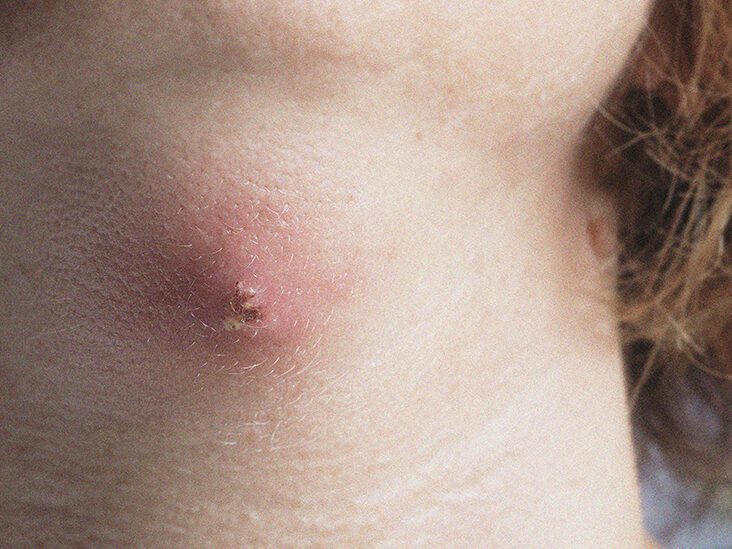
An abscess is a collection of pus surrounded by a capsule of tissue. A cell wall is developed that separates the abscess from nearby healthy tissues. Abscesses can rupture naturally or through medical intervention. When they do, the pus will drain and relieve the patient of pain and swelling. Once the abscess has ruptured, the delimiting cell wall grows back into the cavity, forming a new abscess.
An abscess is a collection of dead cells, bacteria, and debris that have built up beneath the skin. The infection can lead to swelling and inflammation of surrounding tissues. People with weakened immune systems are more likely to develop an abscess because their bodies are less able to fight infections. Besides, poor hygiene and poor circulation are also factors that can lead to an accumulation of pus in the skin. After the abscess is created, it can develop into a mass and be painful and tender to the touch.
Once an abscess has formed, antibiotics can be used to cure it. Usually, your doctor will prescribe an antibiotic for your treatment. Depending on the type of bacterium that is causing the infection, your doctor will then decide whether you need antibiotics to cure the infection. Typically, these drugs are given to people with weakened immune systems or those who have whole-body symptoms such as fever. Your doctor will also take a sample of the pus from the abscess to determine whether it’s antibiotic-resistant or not.
The treatment for an abscess will vary depending on the type of infection. Typically, oral antibiotics are prescribed to cure the infection, and the abscess may need to be treated for several days. In some cases, an abscess may require a second or third course of antibiotics to completely heal. Once the abscess is treated, it should heal. Some people may experience recurrent infections, but it’s usually not life-threatening.
After the abscess is treated, the wound will be free of pus. The abscess will be completely dry for a few days, and then it will start draining. A clean, dry dressing should be applied to the abscess until the abscess heals. If the dressing becomes wet with blood, it needs to be changed. It will take between a week and two months for the abscess to heal.

In some cases, the abscess may not be visible and may be treated at home with a warm compress. However, if the infection is large, a doctor may drain it to prevent infection. The abscess may need to be treated with antibiotics, and the doctor can remove the packing. The doctor will prescribe an oral antibiotic if it is not possible to drain the abscess through a drainage catheter.
When an abscess occurs on the skin, it will take anywhere from one to two weeks for the body to heal. Healthy tissue will grow on the sides and bottom of the abscess, and it may even drain for the first few days. The abscess may be bleeding for a few days. During this time, a clean, dry dressing is recommended. If the dressing becomes wet with blood, it should be changed immediately.
An abscess is best treated as soon as possible after the first symptoms appear. It can point to a point and can be opened by a doctor. If left untreated, it will spread to deeper tissues in the body and even enter the bloodstream. In the most severe cases, an abscess can lead to fever and ill health. During this period, you should keep an eye on the area to make sure it is clean and dry.
If an abscess is found, the doctor will perform an operation to drain the pus and fluid. The surgeon inserts a drainage catheter into the abscess cavity and removes the infection. An abscess can be painful and require hospitalization. At this time, you should not worry too much. If you feel pain, this is not a sign of an infection. An abscess may be small and irritated, but it won’t cause long-term problems.
An abscess can be painful and require treatment. An abscess may be caused by an infection or a foreign body. An abscess is usually painful and is accompanied by red, pink, and warm tissue. Your doctor will be able to give you an accurate diagnosis based on your symptoms. If you experience any of these symptoms, call your health care provider for an evaluation and visit the health website iHealzy.